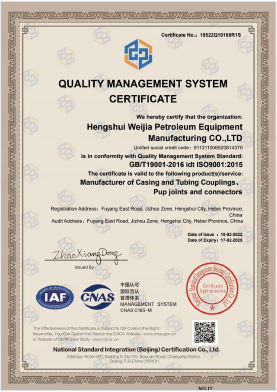- Afrikaans
- Albanian
- Amharic
- Arabic
- Armenian
- Azerbaijani
- Basque
- Belarusian
- Bengali
- Bosnian
- Bulgarian
- Catalan
- Cebuano
- Corsican
- Croatian
- Czech
- Danish
- Dutch
- English
- Esperanto
- Estonian
- Finnish
- French
- Frisian
- Galician
- Georgian
- German
- Greek
- Gujarati
- Haitian Creole
- hausa
- hawaiian
- Hebrew
- Hindi
- Miao
- Hungarian
- Icelandic
- igbo
- Indonesian
- irish
- Italian
- Japanese
- Javanese
- Kannada
- kazakh
- Khmer
- Rwandese
- Korean
- Kurdish
- Kyrgyz
- Lao
- Latin
- Latvian
- Lithuanian
- Luxembourgish
- Macedonian
- Malgashi
- Malay
- Malayalam
- Maltese
- Maori
- Marathi
- Mongolian
- Myanmar
- Nepali
- Norwegian
- Norwegian
- Occitan
- Pashto
- Persian
- Polish
- Portuguese
- Punjabi
- Romanian
- Russian
- Samoan
- Scottish Gaelic
- Serbian
- Sesotho
- Shona
- Sindhi
- Sinhala
- Slovak
- Slovenian
- Somali
- Spanish
- Sundanese
- Swahili
- Swedish
- Tagalog
- Tajik
- Tamil
- Tatar
- Telugu
- Thai
- Turkish
- Turkmen
- Ukrainian
- Urdu
- Uighur
- Uzbek
- Vietnamese
- Welsh
- Bantu
- Yiddish
- Yoruba
- Zulu
Understanding Casing Threads and Couplings for Enhanced Oil and Gas Operations
Understanding Casing Threads and Couplings An Essential Component of Oil and Gas Industry
In the oil and gas industry, the extraction of hydrocarbons from deep underground formations requires a well-designed and meticulously constructed wellbore. One of the critical aspects of maintaining the structural integrity of a well is the use of casing threads and couplings. These components are vital for ensuring the safety and efficiency of drilling operations and the longevity of well infrastructure.
What is Casing?
Casing refers to the pipe that is inserted into a newly drilled well. Its primary function is to provide structural support to the wellbore, prevent collapse, and isolate various formations encountered during drilling. Casing also serves to protect the freshwater aquifer from contamination by fluids from deeper formations. Once the casing is in place, it is typically filled with cement to further secure it and provide a seal against the migration of fluids.
Casing Threads The Key to Connection
Casing threads are the specialized machined edges at the end of casing pipes that allow them to be connected to one another. The threads are crucial for ensuring a tight seal, which prevents fluid leakage and maintains well integrity under high-pressure conditions. There are various types of casing threads designed to accommodate different casing types, depths, and operational requirements.
Types of Casing Threads
1. API (American Petroleum Institute) Threads The most common type of casing thread, API threads are standardized and are the foundation of most casing installations. These threads are designed to create a secure coupling while allowing for some degree of movement during drilling operations.
2. Premium Threads Designed for more demanding applications, premium casing threads provide enhanced strength and sealing capabilities. They are often utilized in deepwater drilling or geologically challenging environments.
3. Stressed Threads These are designed to withstand extreme operational conditions, including high pressures and temperatures. Stressed threads can be found in high-efficiency operations where traditional threads might fail.
casing threads and couplings

Couplings The Connective Tissue of Casing
Couplings are short pieces of pipe with threads on both ends that connect two casing pipes together. They play an essential role in creating a continuous string of casing throughout the well. Couplings also come in various types, including API couplings and premium couplings, designed to match specific casing threads. The quality and integrity of couplings are critical as any failure at the coupling point can compromise the entire well.
The Importance of Proper Installation
Improper installation of casing threads and couplings can lead to disastrous consequences, including well blowouts, environmental contamination, and loss of precious resources. Each connection must be made with precision, following industry standards and best practices. This includes proper torque specifications to ensure the threads are adequately tightened without risking damage.
Inspection and Maintenance
Regular inspection of casing threads and couplings is imperative for ongoing well integrity. Operators often use technologies such as ultrasonic testing and magnetic particle inspection to detect flaws and ensure that casing components are in optimal condition before drilling continues. Regular maintenance processes, such as cleaning and lubricating threads, also contribute to prolonging the life of the casing.
Emerging Technologies and Innovations
Advances in materials science have led to the development of innovative casing and coupling solutions. Companies are increasingly exploring lightweight materials, corrosion-resistant coatings, and improved thread designs that offer enhanced performance in demanding environments. These innovations are crucial as the industry pushes deeper into challenging reservoirs, where conventional solutions may not suffice.
Conclusion
Casing threads and couplings are integral elements of oil and gas drilling operations. Their role in ensuring safety, efficiency, and well integrity cannot be overstated. As exploration continues to develop further into new and often unchartered territories, the importance of reliable and innovative casing solutions will only grow. Understanding these components helps industry professionals make informed decisions that can mitigate risks and optimize operational success, ultimately leading to sustainable resource extraction. In conclusion, the future of casing technology holds immense promise, driving enhancements that will pave the way for safer and more efficient drilling operations overall.
-
Tubing Pup Joints: Essential Components for Oil and Gas OperationsNewsJul.10,2025
-
Pup Joints: Essential Components for Reliable Drilling OperationsNewsJul.10,2025
-
Pipe Couplings: Connecting Your World EfficientlyNewsJul.10,2025
-
Mastering Oilfield Operations with Quality Tubing and CasingNewsJul.10,2025
-
High-Quality Casing Couplings for Every NeedNewsJul.10,2025
-
Boost Your Drilling Efficiency with Premium Crossover Tools & Seating NipplesNewsJul.10,2025







